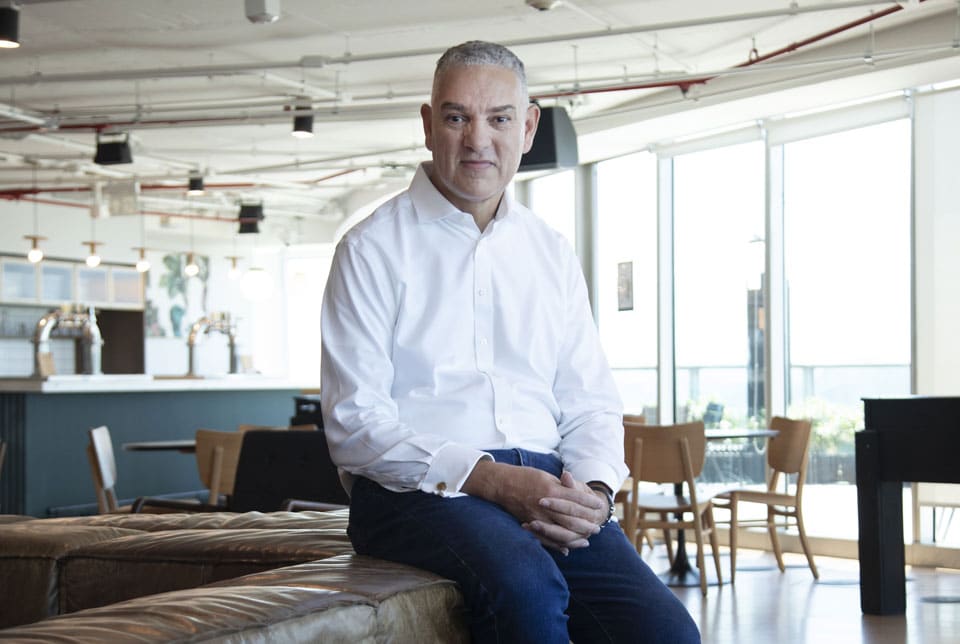Understanding The Difference Between Good and Bad Stress at Work

As the saying goes, “People who feel good about themselves do good work, and people who do good work feel good about themselves.” You would think this straightforward and compelling logic would motivate even the most pragmatic among us to consistently foster an environment where people feel positive about their work and workplace.
Yet, surprisingly, many organisations neglect this principle. The Gallup State of the Global Workplace 2023 Report revealed that 44% of employees face high levels of stress. Prolonged stress can lead to significant health issues. Imagine people as individual rubber bands; each can stretch, but if pulled beyond its limit, it will eventually snap. This highlights the need for treating people equally well, but not just that, it highlights the need to rethink resilience in a radical way.
High-profile athletes and media personalities such as Owen Farrell, Ben Stokes, Adam Peaty, Ellie Downie, and the remarkable Simone Biles have taken breaks due to stress. Their decisions have sparked a public dialogue on mental well-being and helped dismantle stigmatising stereotypes. Work-related stress, often a response to excessive pressure, remains a significant issue.
To enhance performance, it’s crucial to cultivate a work environment where more individuals consistently feel better and more supported, where they are stimulated in a positive way, as opposed to stressed in a negative way.
The Gallup survey, which focuses on employee engagement, reveals a clear connection between low engagement and higher stress levels. Notably, 70% of team engagement is directly linked to the manager’s influence. You might think, then, that the solution is straightforward: managers should focus on helping their teams to deal with stress. However, the reality is more complex.
In our experience, it’s common to encounter organisations where managers often have lower emotional intelligence (EQ) compared to their cognitive intelligence (IQ). Additionally, the widespread and deepening cost-of-living crisis has left many managers themselves facing high levels of prolonged stress and disengagement.
I firmly believe that human inclusion is the cornerstone of a thriving, feel-better-do-better economy. By merging psychological safety with compassionate efficiency, inclusion fosters a culture where everyone feels they belong and experiences ‘positive stretch,’ through an environment where one is able to face challenges, serve, grow and be one’s best self, as opposed to exclusion, which breeds stress and a sense of isolation.
Belonging is vital for psychological safety, connection, and the ability to contribute to a shared future. Inclusive cultures are the driving force behind the human capital economy. In our current fast-paced world, where the mantra is often to do more with less and at greater speed, we tend to treat humans as expendable resources rather than considering how resources can best serve human needs. This mindset needs a fundamental shift.
Through meditation, I discovered the value of “non-doing,” which differs significantly from simply doing nothing. This practice echoes the principle of working from rest, not resting from work. Inclusion transcends being a social ideal; it is a crucial business imperative. How employees are treated directly impacts their engagement and commitment to the organisation.
Understanding the distinction between being ‘positively stretched’ and experiencing negative stress is essential. Those who are positively stretched feel energised and fulfilled, while those under negative stress suffer from anxiety, worry, and burnout. Prolonged stress not only undermines our performance but also stifles our creative thinking. Stress induced by work is both damaging and widespread, often spilling over and adversely impacting our personal lives and relationships.
We all possess our own internal alarm system, and it’s crucial not to ignore it when it sounds. Stress manifests in different ways for each person, but common indicators include increased irritability and frustration, difficulty concentrating, decision-making challenges, and physical symptoms such as headaches, muscle tension, or sleep disturbances.
To address work-related stress, consider the following:
- Control what you give your focus to, not how you spend you time: how you manage your time: Time management is the efficient organisation of your time, whereas attention management is the smart use of your mental focus and energy.
- Encourage regular breaks for your team, and yourself: We all need regular breaks in order to refuel, and there is a danger of burnout if we don’t give ourselves this time.
- Create moments of reflection to allow for changes: maintain a healthy balance, periodically evaluate your workload and work environment and make adjustments as needed.
- When your mind is busy, prioritise mindfulness: Remain Mindful even (or especially) when your mind is full: Take up mindfulness exercises like meditation. We do too much that is motivated rather than done with conscious awareness.
- Create work-life balance boundaries: Clearly define the line that separates earning a living from living a life.
- Remember to Prioritise Physical Health: When stress strikes, we need to make sure we prioritise regular exercise, particularly if we can get outdoors! This has been proven to reduce our feelings of stress.
- Remember that delegation is a strength: Delegation is sometimes misunderstood as a sign of weakness, an admission of incompetence, or a lack of accountability. Delegating shows a leader understands the importance of teamwork and the variety of skills present in a group. It’s a means of boosting productivity, supporting the growth of team members, and guaranteeing that work is done as efficiently as possible.
As opposed to being positively stretched, that motivates and energises, enhances focus, creativity, and performance, leading to personal and professional growth, early signs of stress need to be early recognised to be addressed in a conscious way. This is vital for maintaining well-being and productivity in the workplace.
Written by Paul Anderson-Walsh.
Have you read?
Countries: Women in the workforce. Countries: Personal space. World’s Most (And Least) Religious Countries. Best Countries to Invest In Travel, Tourism, and Hospitality. Most Forested Countries In The World.
Bring the best of the CEOWORLD magazine's global journalism to audiences in the United States and around the world. - Add CEOWORLD magazine to your Google News feed.
Follow CEOWORLD magazine headlines on: Google News, LinkedIn, Twitter, and Facebook.
Copyright 2025 The CEOWORLD magazine. All rights reserved. This material (and any extract from it) must not be copied, redistributed or placed on any website, without CEOWORLD magazine' prior written consent. For media queries, please contact: info@ceoworld.biz








